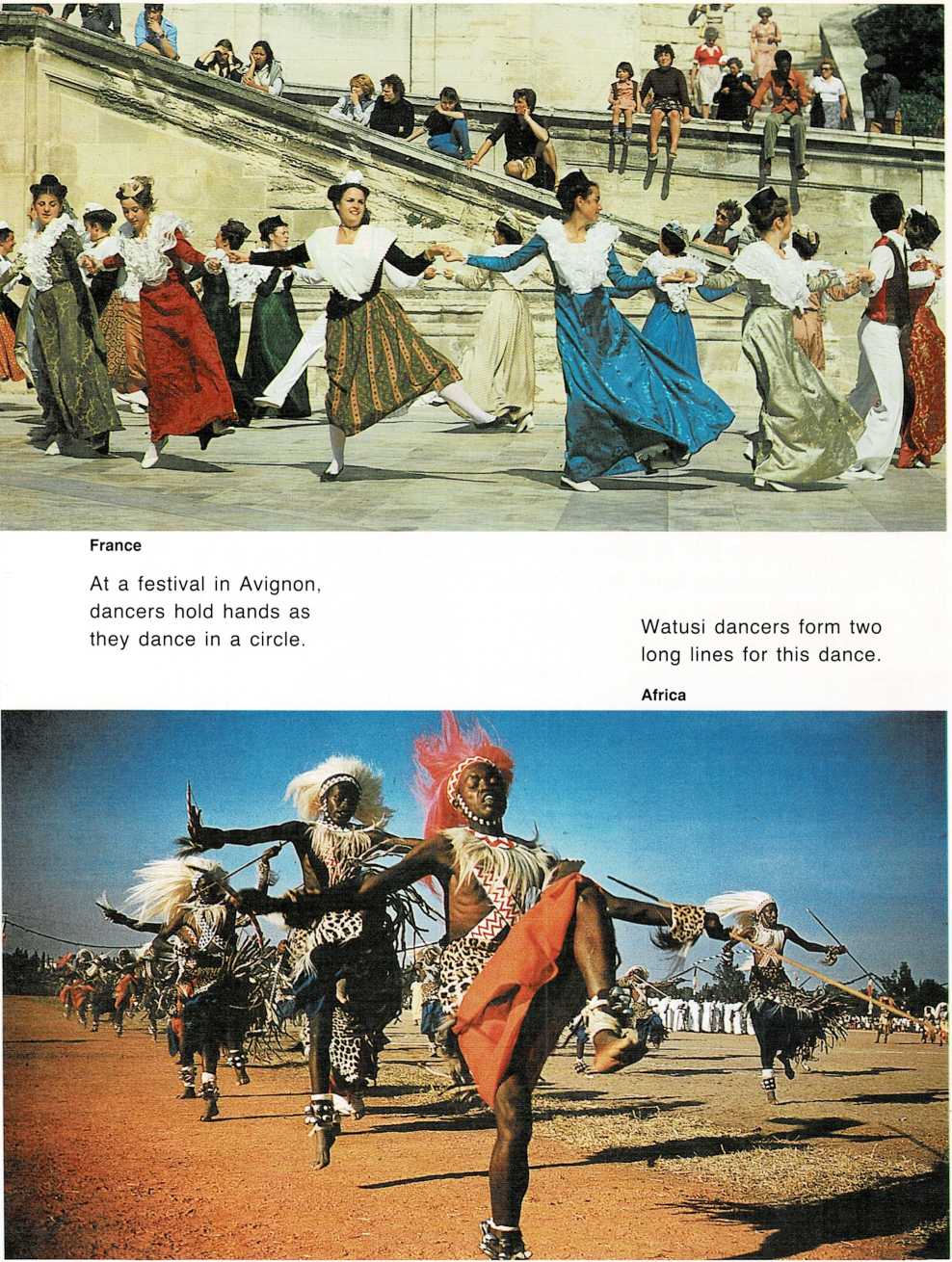
Dance away all
\”Swing your partner, round you go!
Don’t step on her pretty little toe!”
Back and forth, in and out, round and round go the dancers as the caller
tells them what to do. It’s Saturday night, and nearly everyone in town
is enjoying an old-fashioned American square dance.
Across the sea in Israel, a group of people are enjoying a dance, too.
The dancers have formed a big circle. Each dancer’s hands are stretched
out to touch the shoulders of the person on each side. Three steps
right—kick! Three steps left—kick! The circle begins to move faster
and faster. The dancers flash by in a blur of bodies. It’s the hora!
In Macedonia, the men of a small village are dancing the teskoto. A big
drum beats slowly as the men move in a circle taking small steps. Now
the drum beats faster. The dance calls for great skill, and the men leap
high. “Zivalee! Zivalee!” (“Bravo!”) shout the women and children.
When people get together for a good time at a party, a wedding, or on a
holiday, they often dance. Many of the dances they do are folk
dances—dances that were made up hundreds of years ago. These are
dances that never change.
Every country has its own folk dances. Usually they are fast-moving
dances that show that people are happy—like the square dance, the
hora, the teskoto, the Polish polka, and the Italian tarantella.

